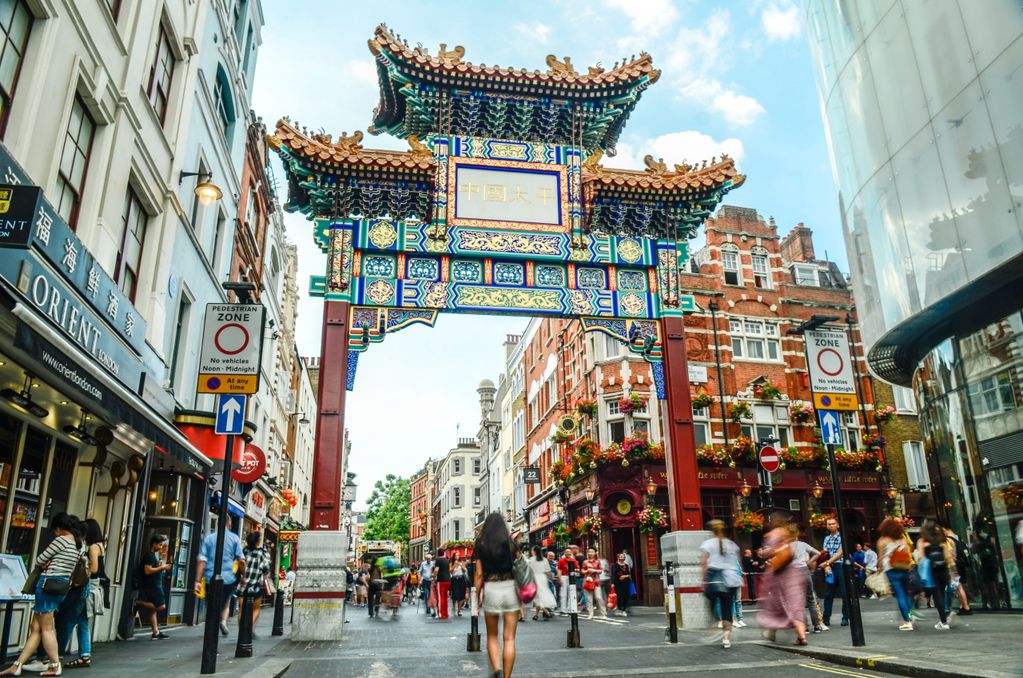From ambition to action: building Europe’s Defence Union
Past event In person

- Area of Expertise
- Peace, Security & Defence
Global Europe

Chairman, Institute for International Strategy, the Japan Research Institute
With the shifting balance of global power, an apolar “G-zero” international order is said to be emerging. While this may overestimate the decline of the United States, which still possesses overwhelming military and economic power, it’s clear that the relative strength of the U.S. and other technologically-advanced industrial democracies has declined as emerging nations rise. Globalisation has moreover resulted in unprecedented levels of economic inter-dependency, including countries with wholly different political systems like China. This is giving rise to hopes that this mutual inter-dependence is making the possibility of wars not just unlikely but unthinkable.
The absence of easily identifiable external threats akin to that of the USSR during the Cold War or more recently those forces targeted in the ‘war on terror’, has seen political leaders around the world focus increasingly on such domestic issues as financial imbalances, economic growth, and social welfare reform. In turn, the overly domestic focus and a lack of due consideration for international complexities has given rise to intensified nationalism and populist politics. It is a trend that is evident in China, Japan and South Korea. A particular concern is that antagonistic nationalism in Japan and China will irreparably damage relations between the two biggest powers in a region that is shifting to become the centre of gravity for the global economy. As well as being of critical importance for Japan, China, and the East Asian region as a whole, it will also have far-reaching ramifications internationally, including for Europe and the U.S.
China has achieved unprecedented rapid economic growth over the last 30 years, overtaking Japan in 2010 to become the world’s second largest economy after the U.S. With its newfound wealth, China has also invested in the rapid expansion of its military capabilities.
It’s clear that the relative strength of the U.S. and other technologically-advanced industrial democracies has declined as emerging nations rise
Yet in per capita GDP terms, China still has a long road ahead. The Chinese Communist Party (CCP) finds itself walking a tightrope between fostering enough economic growth to satisfy public expectations of better living standards, while slowing growth to a sustainable pattern. The new leadership under Xi Jinping has set the target of 7% growth (down from 10%) which would by 2020 double China’s 2010 GDP and this per capita incomes for both its rural and urban populations. At the Central Committee’s Third Plenum last November, the Xi government indicated that the market must play a more decisive role in resource allocation. At the same time, while maintaining constraints on political freedom, the CCP must also face up to tricky domestic challenges that include income inequality, corruption, environmental challenges like air pollution and food safety, reforming the hukou household registration system to allow rural residents to share in the richer coastal areas’ economic benefits and the overall demographic challenges of a China that is set to get old before it gets rich.
How successful the CCP will be in walking this tightrope will greatly influence how co-operative or how tough China’s foreign policy posture is likely to become. To satisfy the Chinese public’s desire for their country to be one day on an equal footing with the United States, President Xi has emphasised a new model of ‘Great Power’ relations with the U.S. But if China’s economic growth and domestic governance challenges encounter difficulties, the risk is that the CCP will be tempted to use diversionary tactics like Leftist Populist movements and an emphasis on nationalism vis-à-vis external forces to distract the people from its own shortcomings of governance.
At present, Japan appears to be the country most at risk of becoming the target of Chinese nationalism. China continues to be anxious to prevent conservative and nationalist forces who may harbour anti-China sentiments from gaining influence in Tokyo, ostensibly because of to Japan’s history in the last century of invading China. China may also perceive the marginalization of Japan as an advantage in its pursuit of a new model of Great Power relations with the U.S, while focus on Japan’s past wrong-doings helps divert attention from China’s new assertiveness, including its increased maritime activities in the East and South China Seas and its declaration last year of its Air Defence Identification Zone.
American power is certainly in relative decline, and U.S. engagement with the Asian region is shifting to a more multi-lateral approach. Washington is no longer the pre-eminent superpower it was at the end of the Cold War. Militarily, after the Afghanistan and Iraq campaigns, America’s political will to exercise unilateral power has withered. Economically, the global financial crisis has put a great strain on the U.S., and has resulted in the broadening of economic global governance from dominance by the U.S. and G8 to an expanded G20 format. The U.S. is a highly dynamic society and has found its way back to positive growth, remaining overwhelmingly the largest economy in the world, but its relative share of global GDP is declining because emerging market economies like China and India are making impressive gains.
Special areas of co-operation that will demand sustained attention and can help to build confidence include the Trans-Pacific Partnership and Regional Comprehensive Economic Partnership negotiations and energy co-operation
This change in the nature of American power has had flow-on effects for the U.S.-Japan alliance. Throughout the post-World War II era, the U.S. operated a hub and spokes system of bi-lateral security ties, with the U.S.-Japan alliance the ‘cornerstone’ for its U.S. engagement with Asia. More recently under the ‘rebalancing’ policy shifting its focus from the Middle East to Asia, the U.S. has shown a greater appreciation for multi-lateralism. It has begun to concentrate on ‘allies in Asia’, on the need to multi-lateralise burden-sharing and on participation in the East Asia Summit (EAS).
Japan’s policymakers have been slow to come to grips with changes in domestic politics and in its external security environment. This has left the Japanese public frustrated and Japan’s political landscape at odds with the liberal internationalism that its future prosperity demands. Historical issues have further complicated this situation, making Japanese Prime Minister Shinzo Abe’s visit to the Yasukuni Shrine in late December last year a major source of tension in Japan’s relations with both China and South Korea.
At home, even since Japan’s asset price bubble burst at the beginning of the 1990s, the country has suffered from two “lost decades” of economic stagnation. The response of Japan’s political leaders has been underwhelming to say the least. This can best be attributed to the weakness of the Japanese political system. Until Mr. Abe took up his second stint in premiership, apart from Junichiro Koizumi’s six years (2001-2006) in office, the premiership has been a rotating door. Six prime ministers in the six years from 2007-2012, with even more frequent cabinet re-shuffles, has hindered the ability of Japanese leaders to forge policy continuity or develop partnerships overseas. Electoral reforms passed in 1994 to change from a multi-member to single-member electoral district system, weakened the power of the ruling Liberal Democratic Party (LDP), while opposition parties have not stepped up to fill the vacuum. When the Democratic Party of Japan (DPJ) won power in 2009, the first real change of government for over 50 years, there were high expectations of a decisive shake-up that would change Japan for the better. Yet in spite of its new ideas, the DPJ failed to introduce policies that brought about real change.
In terms of foreign policies, Japan still needs to adjust the post-Cold War realities. This means finding a way to move past the hot-economics, cold-politics dynamic of its relations with China, and to focus instead on the mutual economic benefits that co-operation presents, while strengthening U.S.-Japanese co-operation in the context of a United States whose Asia posture is now more multi-lateral.
From a Japanese perspective, to respond to the external changes in its security environment while simultaneously trying to absorb public frustrations, Japanese leaders must craft a liberal internationalist vision of foreign policy that recognises Japan’s post-war achievements, that engages China in a positive manner as a regional stakeholder, and that fosters a stable and economically dynamic East Asia as an engine of global growth.
A broader perspective of Japan’s foreign policy and its history needs to recognise its post-war achievements like rebuilding its economy to become the world’s second-largest within only 23 years, overcoming environmental problems, achieving a relatively low level of income inequality, and giving generous international development aid without strings. Japan has also contributed substantially to world peace through the exclusively defence-oriented security posture anchored in the Article 9 peace clause of the Japanese constitution.
Japanese leaders must craft a liberal internationalist vision of foreign policy that recognises Japan’s post-war achievements, that engages China in a positive manner as a regional stakeholder, and that fosters a dynamic East Asia as an engine of global growth
It is often suggested that East Asia can learn from the European Union’s example of constructing a regional community. Over the shorter-term however, the diversity in political systems and stages of economic development means East Asia should pursue a multi-layered functional approach to co-operation. As the most technologically advanced industrial democracy in Asia, Japan is well positioned to jumpstart this process and foster deeper and regularised regional co-operation. The basis of this should be a strengthening of bi-lateral alliances and partnerships, not just with the U.S. but also with American allies like South Korea and Australia. At the next level, trilateral and quadrilateral co-operation with an emphasis on confidence building should be established, such as between U.S.-China-Japan, and U.S.-China-Japan-South Korea. As to the upper layers, they should consist of strengthened sub-regional and region-wide structures such as ASEAN, the Six-Party Talks and the EAS.
Special areas of co-operation that will demand sustained attention and can help to build confidence include the Trans-Pacific Partnership (TPP) and Regional Comprehensive Economic Partnership (RCEP) negotiations and energy co-operation. The TPP and RCEP are important for Japan so that it can increase its links to Asian markets, boost exports, and put the lost decades behind it. These mega trade deals are also important if the region is to build toward an Asia-Pacific wide free trade agreement that includes all the EAS and/or APEC economies. And as East Asia develops as the centre of global economic growth, its energy demands will grow, making regional co-operation essential for joint exploration and development of new oil and gas fields, the development of shale gas technologies and renewable energies.
Encouraging East Asian states to move beyond confrontational postures is also important for major economies around the world, including the EU. Europe’s engagement with Japan and China needs to be geared to encouraging Japan to adopt a more liberal internationalist posture and to jump-start multi-layered functional co-operation, while also encouraging China to overcome its domestic challenges. Ensuring that the leadership in Beijing is not under pressure to adopt a tough external posture will be in the interest not just of East Asia but also of the EU and the global economy as a whole.
Past event In person

Next event

Next event In person & livestreamed

Past event Online





Stay informed
We use cookies and similar technologies to adjust your preferences, analyze traffic and measure the effectiveness of our campaigns. Learn more about our privacy policy.